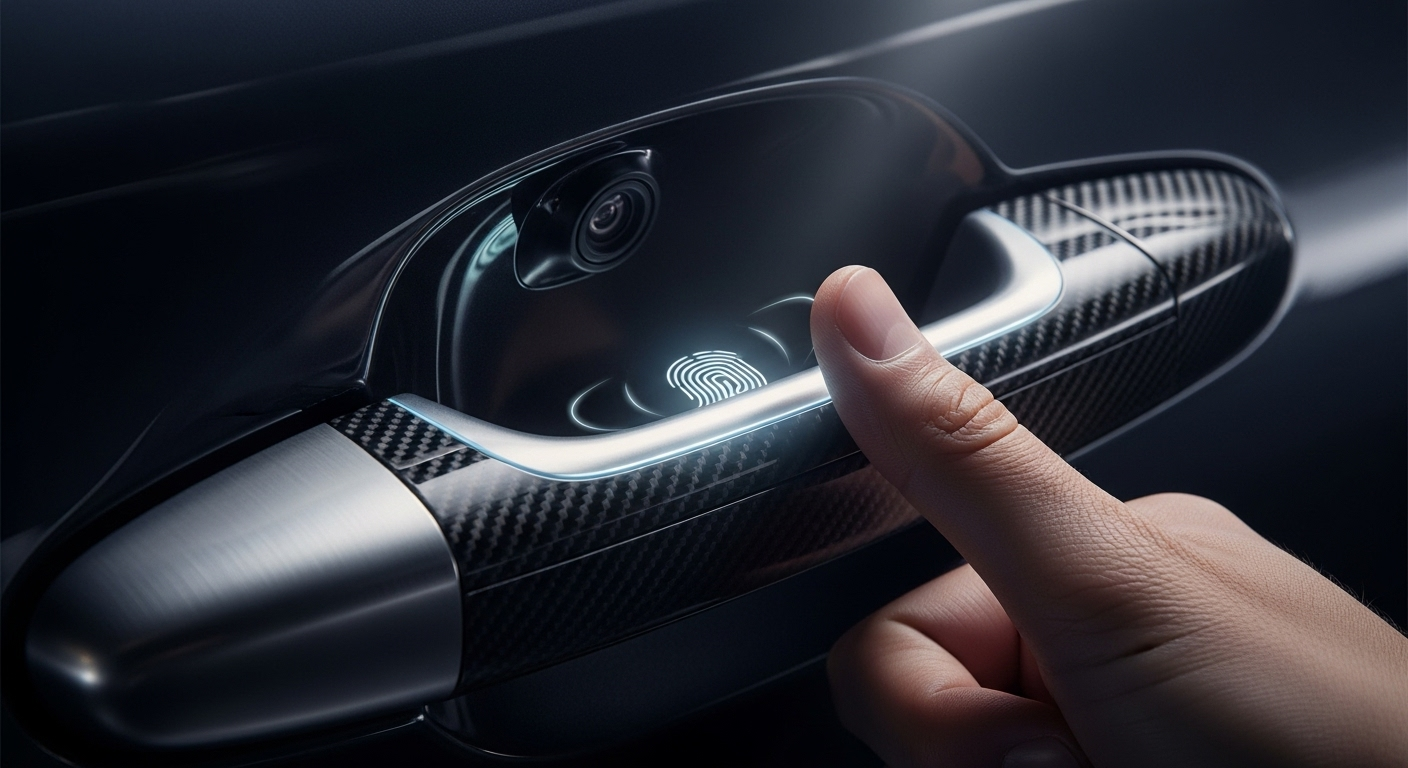Biometric Vehicle Access: The Future of Car Security
Imagine approaching your car, and with just a glance or a touch, it recognizes you and unlocks. No keys, no fobs, just you. This isn't science fiction; it's the cutting-edge world of biometric vehicle access. As automotive technology advances, traditional key systems are giving way to more sophisticated, secure, and convenient methods of vehicle entry and operation. Let's dive into this fascinating realm where biology meets automotive engineering, exploring how it's reshaping our relationship with our vehicles and revolutionizing car security.

Understanding Biometric Vehicle Access
Biometric vehicle access leverages unique physical characteristics to authenticate users. Common modalities include fingerprint recognition, facial recognition, retinal scans, and even voice recognition. These systems work by capturing biometric data, converting it into a digital template, and matching it against stored authorized user profiles. The process happens in milliseconds, offering seamless and secure access to the vehicle.
Fingerprint Recognition: The Vanguard of Biometric Car Security
Fingerprint recognition systems have emerged as early leaders in biometric vehicle access. Sensors integrated into door handles or dashboard surfaces capture fingerprint data, allowing instant verification. This technology not only controls access but can also adjust seat positions, mirror settings, and climate preferences based on the identified user. The speed and reliability of fingerprint systems make them particularly attractive for automotive applications.
Facial Recognition: The Contactless Future
Facial recognition technology is gaining traction in the automotive world, offering a truly hands-free experience. Cameras integrated into the vehicle’s exterior scan and verify the driver’s face as they approach. This contactless approach is not only convenient but also hygiene-friendly, a factor that has gained importance in recent years. Advanced systems can even detect driver fatigue or distraction, enhancing safety beyond mere access control.
Voice Recognition: Speaking to Your Car
Voice recognition systems add another layer to biometric vehicle access, allowing users to unlock and start their cars with voice commands. This technology integrates seamlessly with in-car infotainment systems, offering a unified interface for vehicle control and entertainment. The challenge lies in developing robust systems that can accurately distinguish between authorized users and potential impostors, even in noisy environments.
The Security Implications of Biometric Vehicle Access
While biometric systems offer enhanced security, they also introduce new considerations. Unlike keys or fobs, biometric data cannot be changed if compromised. This permanence necessitates robust data protection measures. Additionally, the potential for false positives or negatives raises questions about reliability in critical situations. Manufacturers must balance convenience with foolproof security, ensuring that biometric systems are not easily fooled by photographs, recordings, or other spoofing attempts.
Challenges and Future Developments
Despite their promise, biometric vehicle access systems face several challenges. Environmental factors like extreme temperatures, dirt, or moisture can affect sensor reliability. Privacy concerns surrounding the collection and storage of biometric data must be addressed. Future developments may focus on multi-modal biometric systems, combining different biometric identifiers for enhanced security. We might also see the integration of artificial intelligence to continuously improve recognition accuracy and adapt to changes in users’ appearances over time.
The Wider Impact on Automotive Design and User Experience
The adoption of biometric access systems is influencing broader aspects of automotive design and user experience. Traditional key ignitions are giving way to push-button starts, while steering column locks are being reimagined for the keyless era. The ability to instantly recognize users opens up possibilities for personalized in-car experiences, from automatically adjusting comfort settings to cueing up preferred music or navigation routes.
Legal and Ethical Considerations
As biometric vehicle access systems become more prevalent, they raise important legal and ethical questions. Who owns the biometric data collected by vehicles? How can this data be protected from theft or misuse? Legislators and automakers must work together to establish clear guidelines for data handling, user consent, and system security. The potential use of biometric data in criminal investigations or insurance claims adds another layer of complexity to these considerations.
The Road Ahead for Biometric Vehicle Access
Biometric vehicle access represents a significant leap forward in automotive security and convenience. As the technology matures, we can expect to see more widespread adoption across vehicle classes, from luxury cars to everyday commuters. The integration of biometrics into our driving experience signifies more than just a new way to unlock our cars; it’s a step towards a more personalized, secure, and seamless relationship with our vehicles. As we move forward, the challenge will be to balance the undeniable benefits of this technology with the need for robust security measures and ethical data management practices. The future of car access is here, and it’s written in our very biology.





